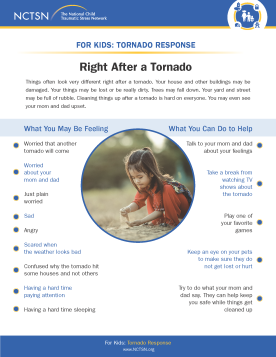
Tornado Response for Kids: Right after a Tornado
Offers information to children about how they may be feeling after a tornado and ways to cope with those feelings.
A tornado is a violently rotating column of air that extends from a thunderstorm to the ground. They usually appear as a funnel or cone-shaped cloud, with wind speeds of up to 300 miles per hour. They can cause major destruction in their path. Sometimes tornadoes are preceded by heavy rain, wind, and hail; at other times they seem to arise out of relatively clear conditions. Sometimes people hear a loud roar or trainlike sound when a tornado approaches. Tornadoes have occurred in all fifty states and at all times of year. However, the Midwestern and Southern states have the greatest number, and the most violent tornadoes tend to be in the spring. Areas prone to tornadoes usually have a warning system to alert residents that they should seek safe shelter.
Being prepared beforehand is the best way to help children and family members recover after a tornado. To improve their preparedness, families should:
Knowing what to do during a tornado can help families feel more in control and take steps to increase their safety.
When a tornado warning is issued or a tornado is seen, families should:
Immediately after a tornado has passed, families should:
To address children’s reactions during a tornado, parents and caregivers can:
Tornadoes are unusual storms, as their path is often erratic. In the same neighborhood, some houses may be completely damaged while others will have not been impacted. While scattered destruction can be easier on the community than that of a flood or a hurricane (in that not all community resources may be used up), the inconsistent pattern of damage can cause feelings of guilt in those spared or unfairness in those recovering. Children may develop unusual ideas or myths about why a tornado did or did not hit their home.
In early aftermath, children may see anxiety and fear in parents and caregivers who are usually confident. They may have to move out of their area or seek temporary housing. They may have lost some of their treasured toys and memorabilia or have lost contact with those supports in their life (e.g., teachers, friends, neighbors) who provided them comfort. If they remain in the area, they tend to be exposed to reminders including rubble, debris, and changes in landscape (e.g., trees without leaves, broken branches).
As with other natural disasters, there will be a spectrum of reactions that children and families will experience. They may worry that another tornado will occur, feel troubled when reminded about the tornado (e.g., dark and low clouds, sounds of strong winds, siren test), and worry when separated from their loved ones. They may exhibit different behaviors (e.g., withdrawal from usual activities, increased anxiety level) or report more physical complaints. Children will react differently depending on their age, developmental level, and prior experiences. Responses also depend on the significance of secondary stresses they are exposed to (e.g., family changes, number of moves, family financial hardship). In general, most families will recover over time, particularly with the support of family, friends, and organizations. Since tornadoes impact communities erratically, some families will be able to return to their normal routines rather quickly, while others will have to contend with numerous hardships, losses, and potentially medical rehabilitation (if there were family members injured). Understanding children’s typical reactions will help ensure they get the right supports.
Children’s functioning and recovery will be influenced by how their parents and caregivers cope after the tornado. Children often turn to adults for information, comfort, and help. To assist children, discuss with parents and caregivers ways to:
In response to the recent tornadoes, the National Child Traumatic Stress Network has developed resources to help families and communities. These resources include:

Offers information to children about how they may be feeling after a tornado and ways to cope with those feelings.
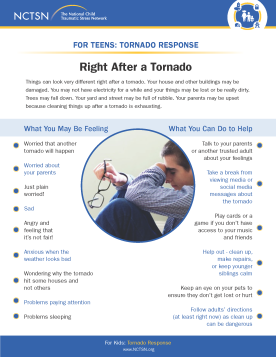
Offers information to teens about how they may be feeling after a tornado and ways to cope with those feelings.
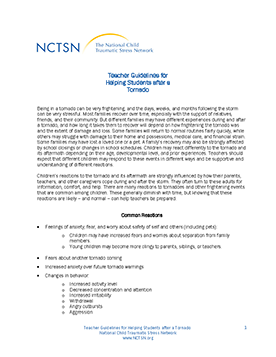
Offers teachers guidance on helping students after a tornado. This fact sheet describes common reactions students may have, how teachers and school staff can help, as well as engage in self-care after a tornado.
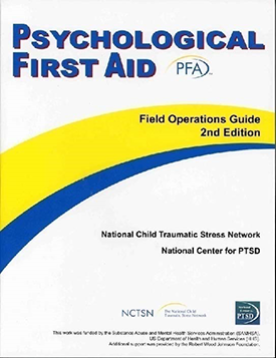
Gives guidance on responding to disaster or terrorism events using the Psychological First Aid intervention. This evidence-informed approach helps to assist children, adolescents, adults, and families in the aftermath of disaster and terrorism.

Offers parents and caregivers information about ways that children may respond to the anniversary of a traumatic event.

Offers information to children on ways to help themselves and others after a tornado.
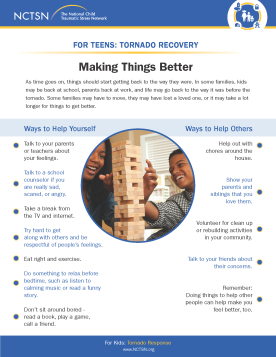
Offers information to teens on ways to help themselves and others after a tornado.
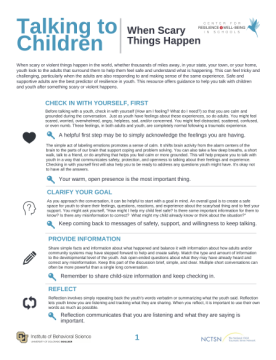
Offers guidance on talking with children and youth when scary things happen.

The national Disaster Distress Helpline (call or text 1-800-985-5990; for Spanish, press “2”) is dedicated to providing crisis counseling and support 24/7/365 for anyone in the U.S./territories experiencing emotional distress or other mental health concerns related to any natural or human-caused
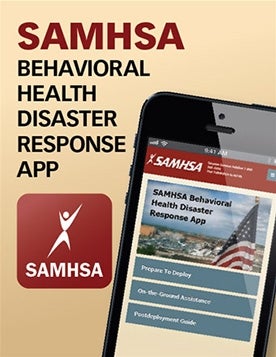
Makes it easy to provide quality support to survivors. Users can navigate pre-deployment preparation, on-the-ground assistance, post-deployment resources, and more—at the touch of a button from the home screen.